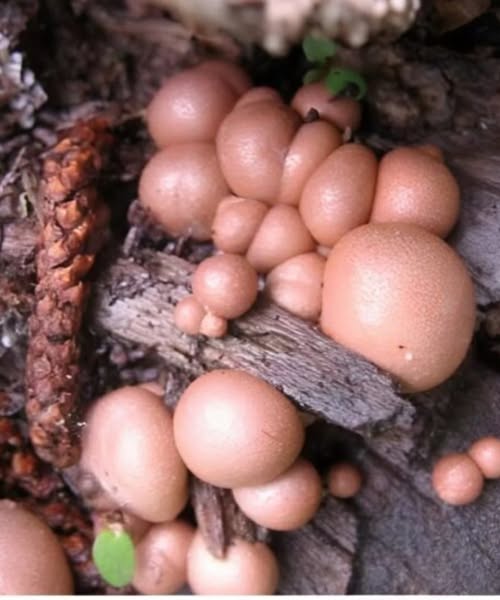It began like any other peaceful morning. The sunlight spilled softly across the backyard, turning the dew on the grass into thousands of glittering crystals. My dog, Bruno, was in his usual morning frenzy — dashing back and forth through the garden, tail wagging, ears flapping wildly, his nose pressed to the earth as he explored every scent from the night before. Everything felt calm, quiet, and beautifully ordinary.
Until I noticed something that wasn’t.
Near the old tree stump, a faint shimmer caught my eye — a cluster of tiny, orange, pearl-like spheres scattered over the damp soil. They almost seemed to glow under the golden light. My first thought was simple: maybe they were just rubber balls tossed over the fence by the neighbor’s children. It wouldn’t have been the first time I’d found a few stray toys in the yard.

But as I looked closer, unease began to creep in. The strange spheres weren’t limited to one spot — there were dozens more near the wooden bench, along the fence line, even by the compost heap. Their arrangement looked almost intentional, as if they had appeared overnight. A chill ran through me. These weren’t toys. These were something else entirely.
Before I could investigate further, Bruno bounded toward the stump, ever curious, and before I realized what was happening, he picked one up in his mouth.
“Bruno! Drop it!” I shouted, my pulse spiking.
Thankfully, he obeyed, letting it roll out of his mouth, but the damage might already have been done. My mind raced through worst-case scenarios — what if it was poisonous? What if it was some kind of fungus or chemical residue? I knelt down, heart pounding, but hesitated to touch it. Instead, I took several clear photos with my phone and called the veterinary clinic immediately, hoping they could help me identify whatever it was.
A short while later, the vet called me back. Her tone was calm and reassuring.
“Don’t worry,” she said. “Those are myxomycetes — commonly known as wolf’s milk slime mold.”
Slime mold. I had never heard of it before, and certainly not in my own garden. The name itself sounded unsettling, but the vet quickly explained what I was looking at. These organisms are neither mushrooms, plants, nor animals. Instead, they belong to a curious in-between group — primitive life forms that move and feed in strange ways. They tend to appear on decaying wood, moist mulch, or shady areas, especially after long periods of rain.
Despite their eerie, almost alien appearance and ominous name, wolf’s milk slime mold is harmless. The vet assured me that it posed no danger to Bruno or to humans. They aren’t poisonous, though crushing them can sometimes cause mild skin irritation for people with sensitivities. That small detail was enough for me to decide I’d handle them with care.
Feeling relieved but still slightly unsettled, I put on gloves, gently collected the orange spheres, and disposed of them properly. Once the garden was clear again, I gave Bruno a treat for being obedient — and then made a mental note to be more observant from now on. Since that day, I’ve gotten into the habit of scanning the garden every few mornings, especially after rain, just to make sure no new clusters appear. Bruno still explores every corner with endless enthusiasm, but I keep a closer eye on what catches his attention.
The experience taught me a few simple but lasting lessons:
- Don’t panic. What looks frightening isn’t always dangerous.
- Avoid direct contact. Never touch unfamiliar plants or growths with bare hands.
- Document before acting. Taking clear photos and consulting an expert can prevent mistakes.
- Stay curious — but cautious. Curiosity is a gift, but curiosity combined with care is the smartest way to stay safe.
Now, every time I step into the garden, I’m reminded of how nature still holds mysteries just beneath the surface — and how even the smallest, strangest discovery can turn an ordinary morning into a story worth remembering.


